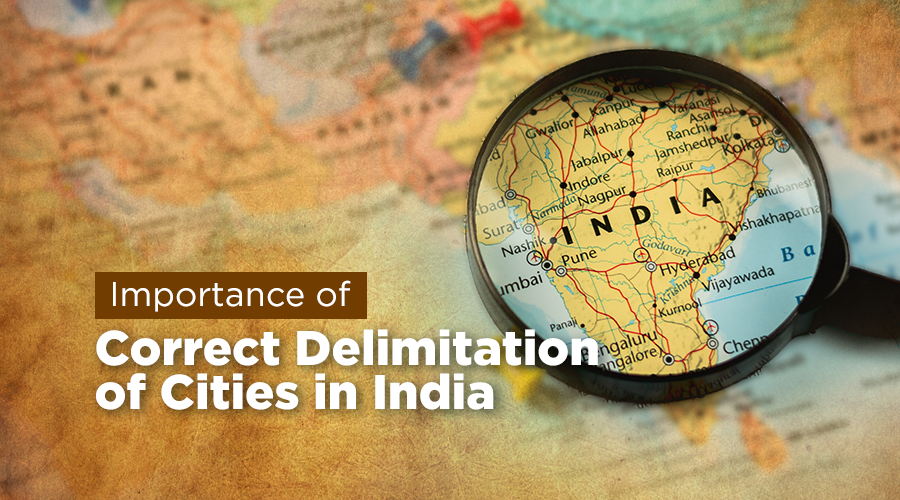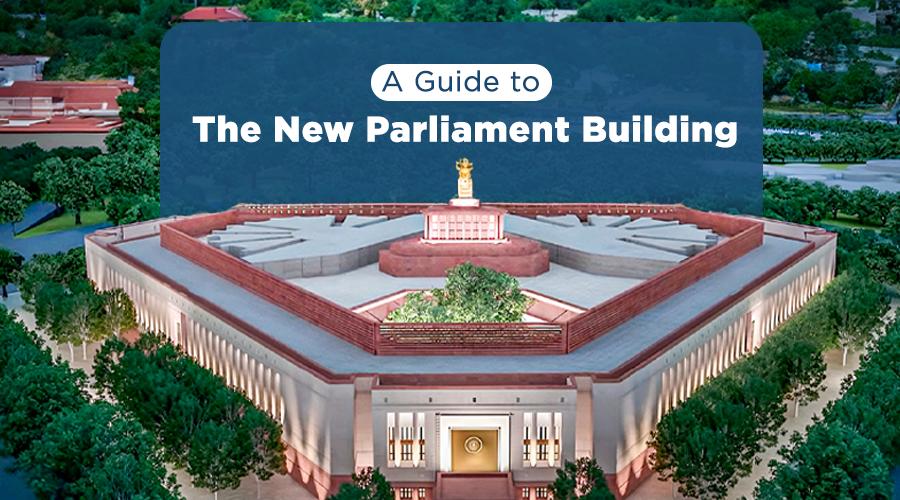India, a land of diverse cultures and landscapes, is experiencing rapid urbanisation. With the urban population expected to reach 600 million by 2030, cities are becoming the epicentre of economic growth and social transformation. However, the burgeoning urban population brings along a myriad of challenges, from inadequate infrastructure to environmental degradation. In this context, the correct delimitation of cities becomes paramount to ensure efficient governance, equitable distribution of resources, and sustainable development. Take a look at the significance of correct delimitation of cities in India and its implications for urban planning, governance, and quality of life.
Understanding Delimitation of Cities:
Delimitation of cities refers to the process of defining the boundaries and administrative jurisdictions of urban areas. It involves delineating the extent of a city’s territory, including its core urban area, suburbs, and peri-urban regions. Correct delimitation is essential to accurately assess the population, plan urban infrastructure, allocate resources, and provide public services effectively. This process is guided by the Constitution, specifically Articles 82 and 170, which mandate adjustments based on each Census. Under Article 82 of the Indian Constitution, the Parliament is required to enact a Delimitation Act after each national Census. This act serves as the legal framework for redrawing the boundaries of various electoral constituencies to reflect population changes. Article 170 mandates that states must also be divided into territorial constituencies in accordance with the Delimitation Act, ensuring that state-level electoral boundaries are adjusted to maintain equitable representation. Once the Delimitation Act is enacted, it is the responsibility of the Union government to establish a Delimitation Commission. This Commission is tasked with the complex process of redrawing constituency boundaries, ensuring that each constituency is demarcated in a manner that accurately represents the latest population data.
The Delimitation Commission, established under an act of Parliament, has been set up four times — 1952, 1963, 1973 and 2002 under the Acts of 1952, 1962, 1972 and 2002.
Even though constituency boundaries were redrawn in 2001 to balance the population among seats, the number of Lok Sabha and legislative assembly seats each state has has not changed since the 1971 Census. This is because the 84th Amendment to the Indian Constitution in 2002 extended the freeze on the number of seats until 2026. This amendment was made to maintain consistent representation across states, regardless of their population changes, ensuring stability in the number of seats until after 2026.
Significance of Correct Delimitation:
The importance of accurate delimitation extends beyond mere administrative adjustments. It ensures that the democratic principle of “One Person, One Vote” is upheld, reflecting the population distribution across different regions. This is particularly relevant given the significant population growth and shifts observed over time, affecting the balance of representation between states. Let’s take a look at other significant factors:
Effective Urban Planning:
Correct delimitation of cities lays the foundation for effective urban planning and development. By demarcating the boundaries of urban areas, planners can identify growth corridors, plan infrastructure projects, and allocate land for residential, commercial, and industrial purposes. This enables cities to accommodate population growth in a sustainable manner and prevent unplanned sprawl.
Efficient Governance:
Clear boundaries facilitate better governance and administration of cities. With well-defined jurisdictions, local authorities can streamline service delivery, manage resources efficiently, and address the needs of residents more effectively. It also enhances coordination between different administrative bodies, such as municipal corporations, development authorities, and urban local bodies, leading to improved governance outcomes.
Resource Allocation:
Correct delimitation is crucial for equitable distribution of resources among urban areas. It enables policymakers to allocate funds, infrastructure projects, and public services based on the population density, geographical spread, and socio-economic characteristics of each city. This ensures that resources are allocated judiciously, addressing the needs of both core urban areas and peri-urban regions.
Infrastructure Development:
Accurate delimitation of cities is essential for planning and implementing infrastructure projects. It allows urban planners to identify areas with inadequate infrastructure, such as transportation networks, water supply, sanitation, and housing, and prioritise investments accordingly. This promotes inclusive development and improves the quality of life for urban residents.
Sustainable Development:
Correct delimitation plays a crucial role in promoting sustainable development. By defining urban boundaries, policymakers can protect ecologically sensitive areas, preserve natural resources, and promote green spaces within and around cities. It also enables better management of urban sprawl, reduces congestion, and minimises environmental degradation, contributing to long-term sustainability.
Needs of Marginalised Community:
Delimitation plays a critical role in addressing the needs of marginalised communities. By determining the seats reserved for Scheduled Castes (SC) and Scheduled Tribes (ST), the process ensures that these groups have adequate representation in legislative bodies. This is essential for advocating for their rights and interests within the democratic framework.
Challenges and Considerations:
While the importance of correct delimitation is evident, several challenges need to be addressed to ensure its effectiveness. These include:
Data Accuracy:
Delimitation requires accurate data on population, land use, and socio-economic indicators. However, data collection processes in India often face challenges such as underreporting, data inconsistencies, and outdated information, which can affect the reliability of delimitation exercises.
Political Considerations:
Delimitation decisions are sometimes influenced by political considerations, leading to manipulation or arbitrary boundary changes. This can distort urban boundaries, undermine governance, and create administrative complexities.
Interjurisdictional Coordination:
Many urban agglomerations extend beyond municipal boundaries, requiring coordination among multiple administrative entities. Lack of cooperation and coordination between neighbouring jurisdictions can hinder effective delimitation and urban planning efforts.
Urban Informality:
Informal settlements and unauthorised colonies pose challenges to accurate delimitation, as they may not be officially recognized or included in city boundaries. Addressing the needs of informal settlements while maintaining the integrity of urban boundaries is a complex task.
Key Takeaway:
Correct delimitation of cities is a foundational aspect of urban governance and development in India. It facilitates effective urban planning, efficient governance, equitable resource allocation, and sustainable development. As India continues to urbanise rapidly, policymakers must prioritise accurate delimitation exercises based on reliable data, transparent processes, and inclusive stakeholder engagement. By ensuring correct delimitation, India can build resilient, inclusive, and sustainable cities that cater to the needs of present and future generations.





